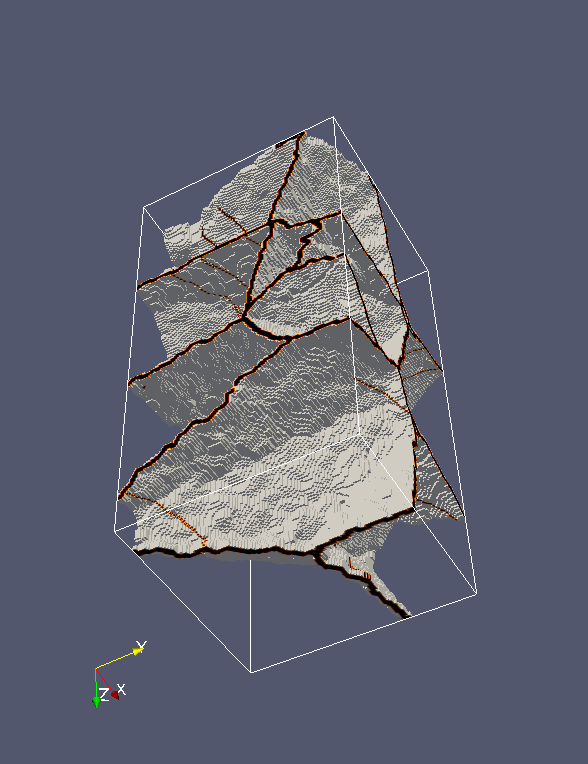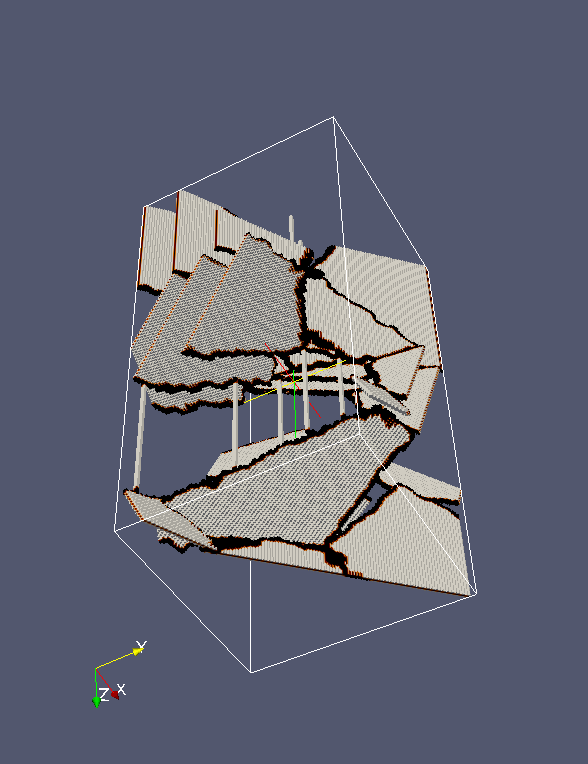


CGPACK > APR-2014
16-APR-2014: Visualising grain boundaries.
This is very simple. If a cell has a neighbour with a different state, then it is a grain boundary. Clearly this makes boundary two cells thick, i.e. on the boundary between grains 1 and 2, a cell with state 1, having a neighbour with state 2, will be marked as GB. In turn, when this neighbour cell will be analysed, it will be determined that its neighbour is from grain 1, hence it too is a GB cell. All GB cells are marked as intact: cgca_gb_state_intact. The results below are from a (64,64,64)[2,2,4] coarray model with 20 grains.


The orientation in the two arrays (grains and fracture) is identical for ease of comparison.
17-APR-2014: GB and cracks
Another example. The 4 images below are all from the same model with 20 grains. Here there seem to be neither 1D nor 3D cracks, so other problems are visible! There seem to be multiple parallel cracks in some grains. This shouldn't really be happening, unless they started from different boundaries, which is very hard to say afterwards.
The cracks and the GB viewed from one angle:
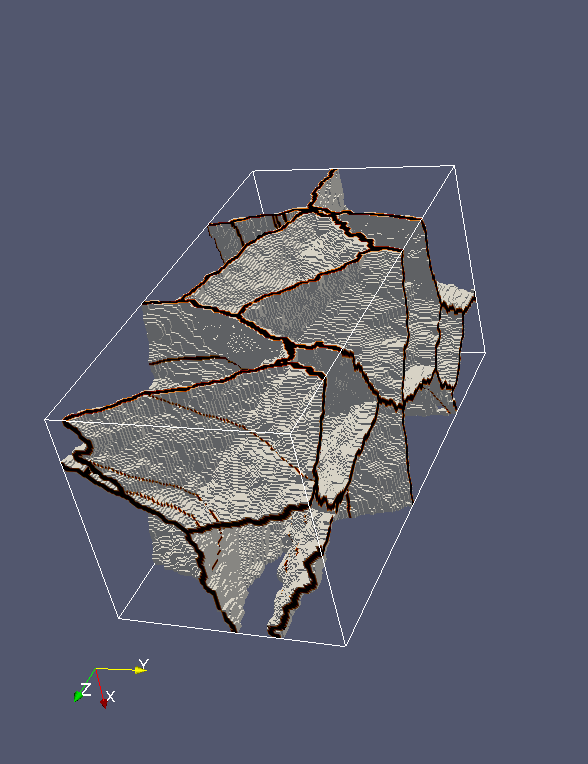
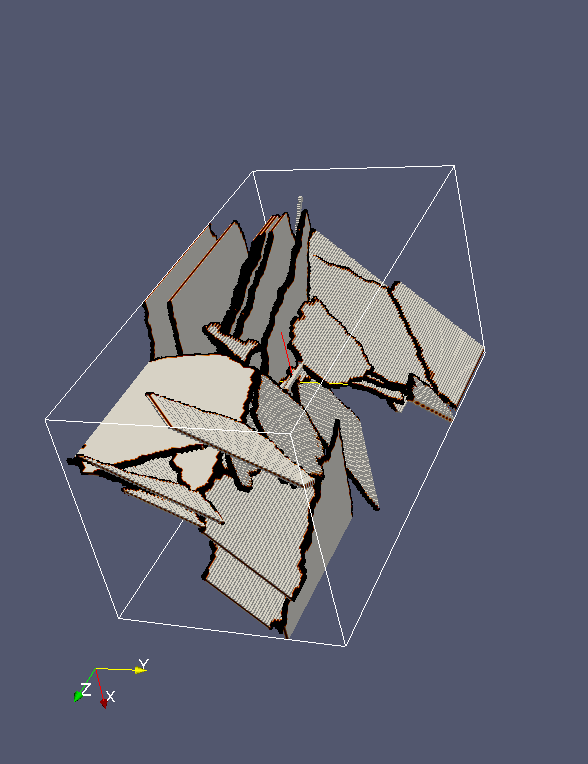
Now the same cracks and GBs viewed from another angle:

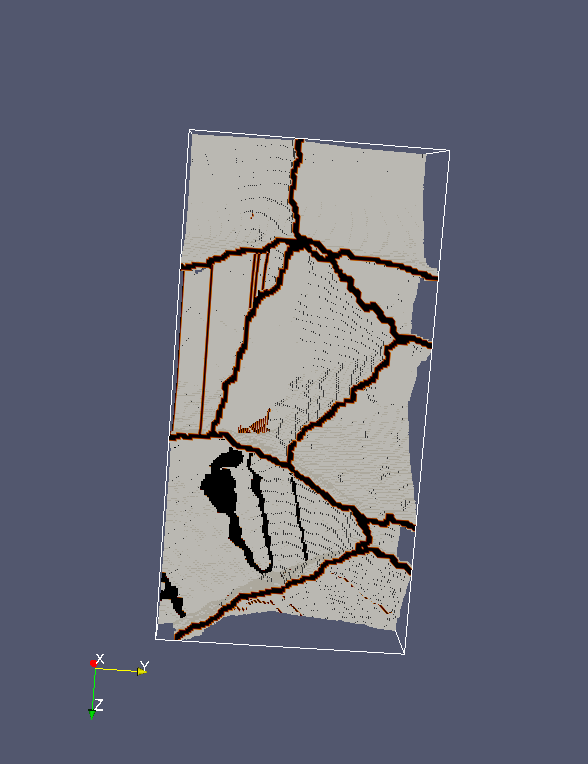
A cube model with 20 grains, still some grains have multiple cleavage cracks. Also, lots of 1D cracks:

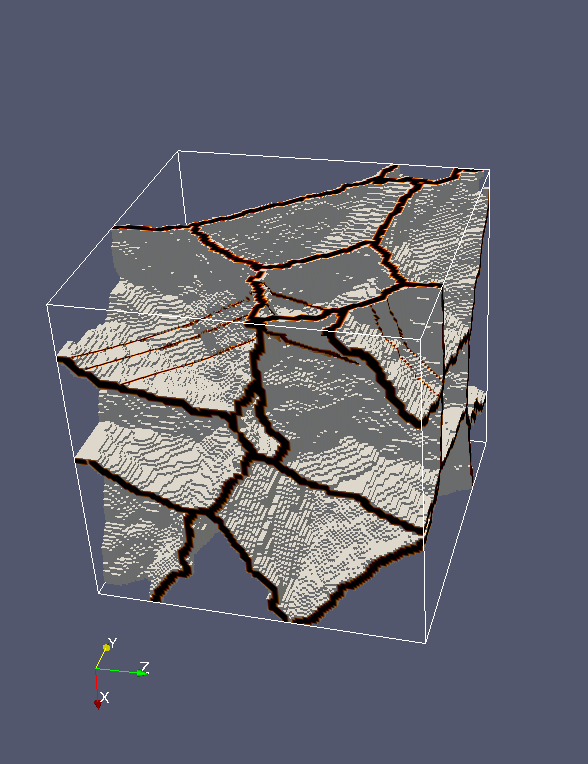
And another example, still 20 grains. Observe the same cleavage propagation features.
